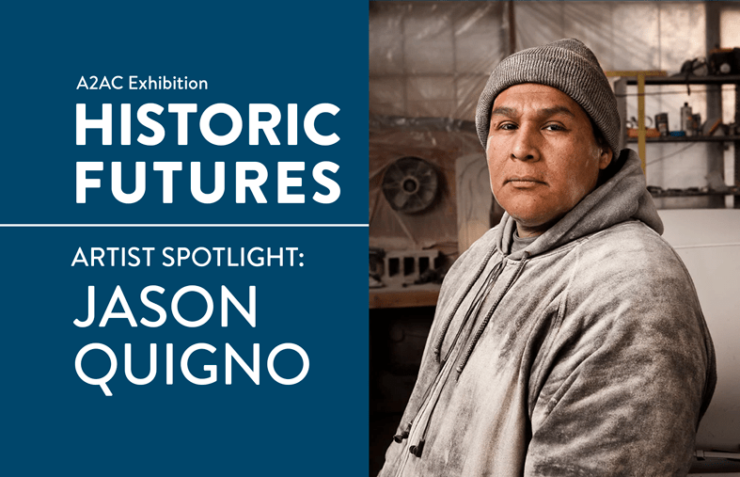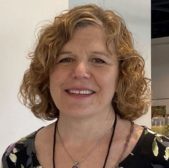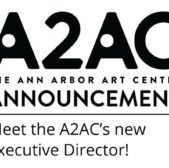Jason Quigno (he/him/his) is an Anishinaabe Artist born in 1975 in Alma, Michigan. He works in all types of stone and is constantly evolving, pushing the limits of each sculpture.
Tomorrow’s Stories: Jason Quigno – Transcription
(Interview with Saugatuck Center for the Arts for the Contemporary Native American Art Exhibition – October 4, 2017)
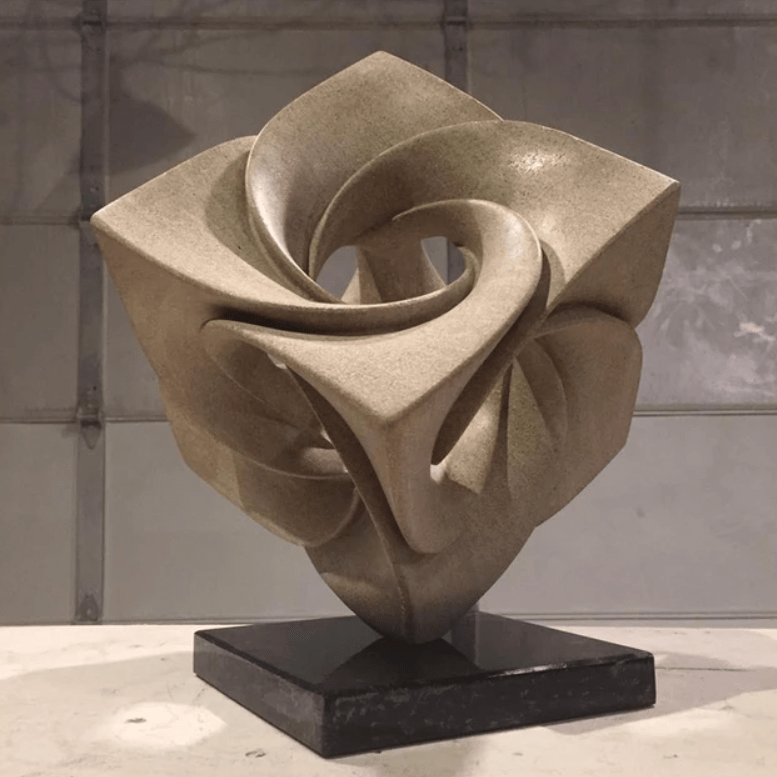
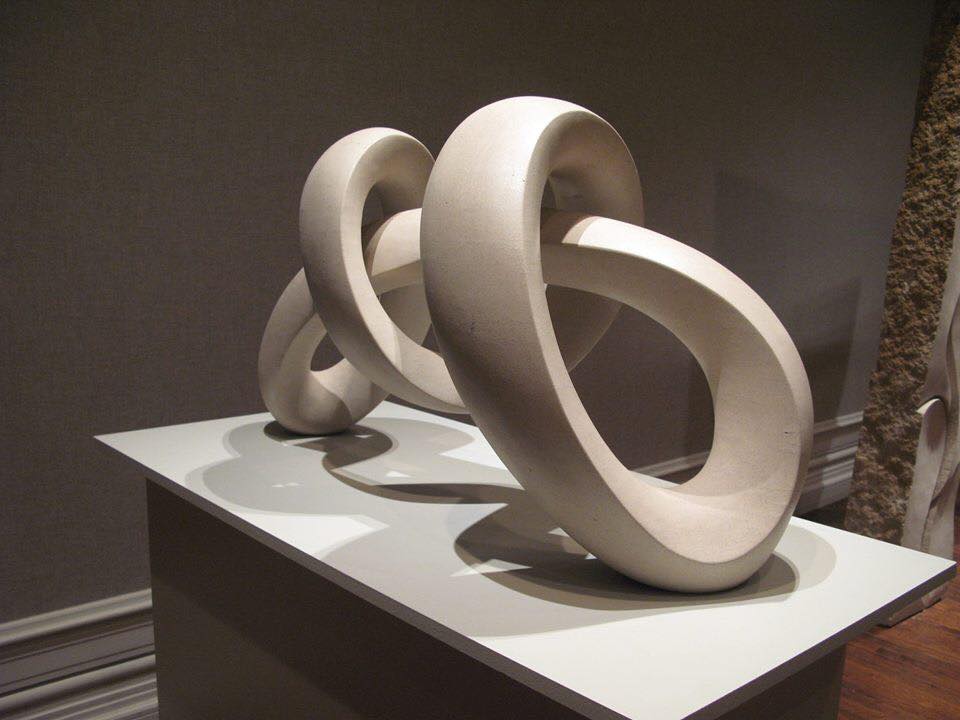
When did you start working in stone? What is the significance of the material you work in?
I started at the age of fourteen. My mother actually forced me into a stone sculpture class, and I didn’t know it at the time, but it turned into a lifelong life deal.
I never expected it to turn into a career. It was just something I did, and here I am, almost 30 years later, still doing it.
The significance for me is the material itself. I still find it amazing when I see that raw stone and I see the finished piece. For me, that’s like magic. I can’t believe I made them [his sculptures], still to this day; it’s like that.
Also, with the stone, it’s more of a contemporary deal for my people. We’ve done stone edgings on cliff faces and rocks, but stone carving is a new thing.
So I feel it’s a part of my mission, as an Anishinaabe artist, to tell the stories of our people and put it down in stone. Because I look at the Egyptians and the Indian cultures and the Greeks, their work has been here for thousands of years.
So I want the Anishinaabe stories to be here for thousands and more.
What does your creative process look like?
It varies; sometimes, just the stone itself inspires me, and I don’t need to draw anything on it; I just start cutting away because it’s right there. Other times I draw.
My girlfriend goes into Myers, and I’ll sit out of my parking lot and draw designs and stuff. Or some of my great ideas have come from furniture stores.
I love contemporary design, clean lines, and so it just comes from all over the place.
Who or what inspires you?
Well, that’s a big question because that can vary from day to day. Sometimes its nature; just recently, I went away up to Baraga, Michigan, where I grew up, and when I came back, I was pretty charged up and inspired.
I guess artists who have inspired me have been Isamu Noguchi, Brancusi; I like the simplicity of their designs; Norval Morrisseau, he was a native painter who did the kind of Ojibwe style of work. And just all kinds of stuff inspires me.
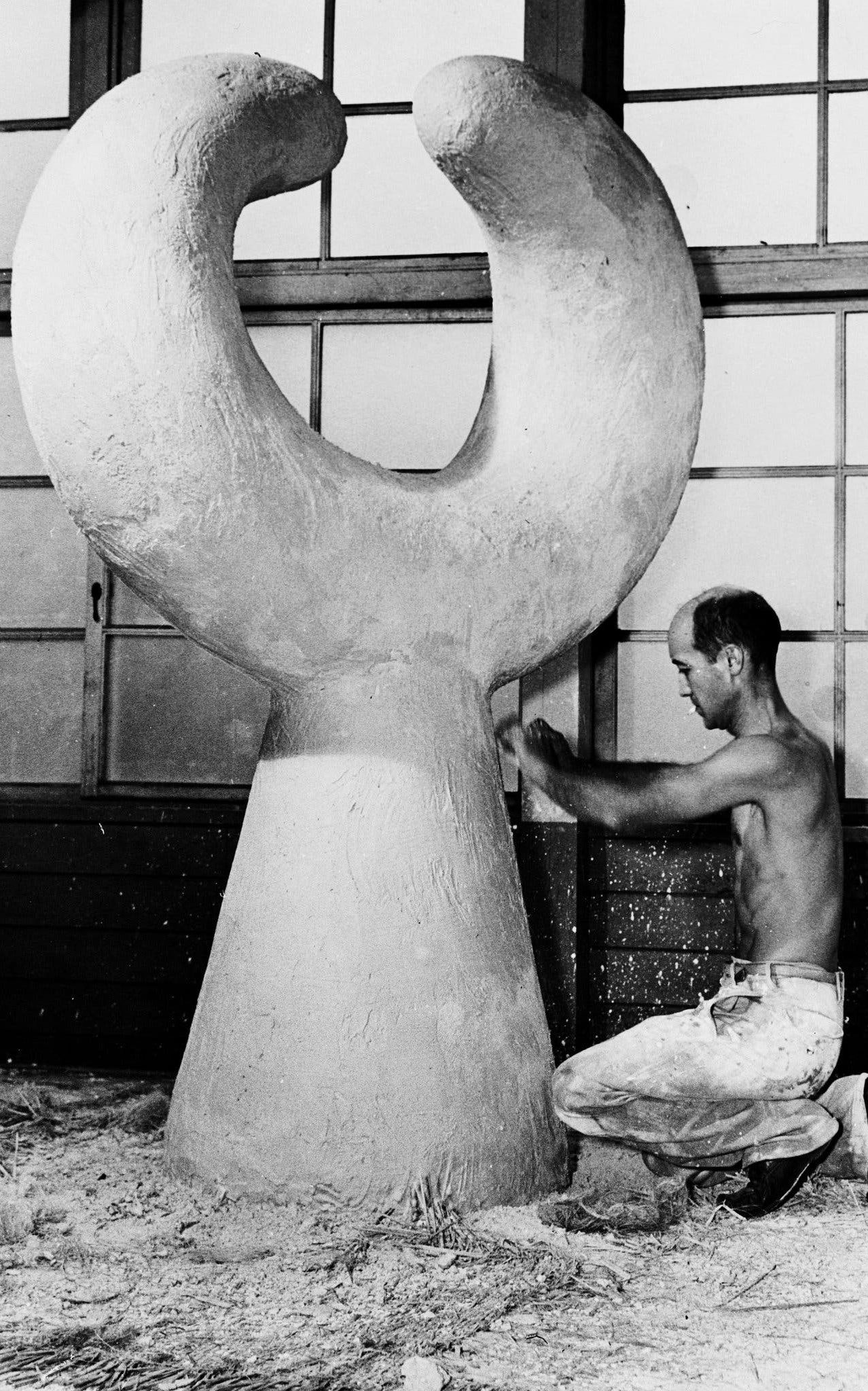
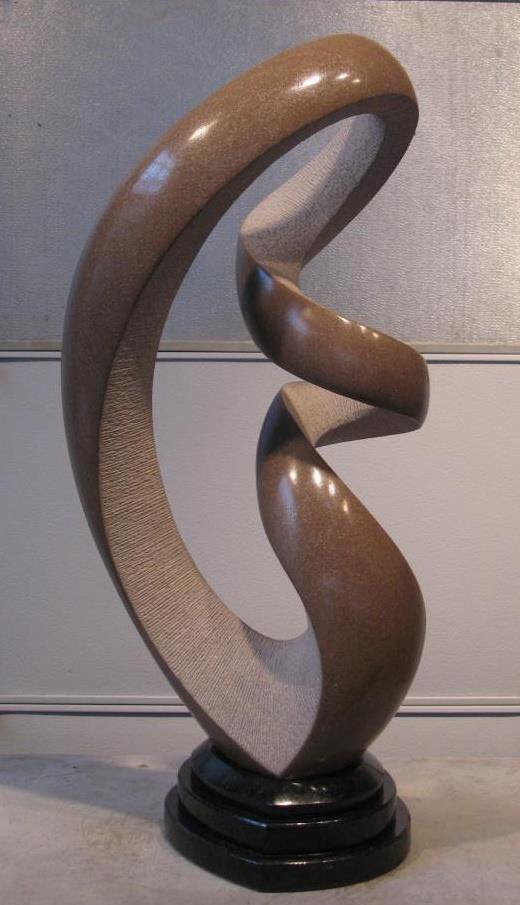
How do your modern pieces tell stories of traditional depictions of Native People and culture?
Well, I’ve been doing one series… they are kind of ‘the totem series,’ I guess, and they don’t depict any animals, feathers, or flora; nothing like what people think of when thinking about Ojibwe art. It’s nothing like that; I don’t know how to explain it, but what I do is convey that sense through the lines and the cut in the stone.
In the totem series, I have these [works] called earth totems, representing the wind, the water, and the earth. [There are] these long cuts going down the center that represent the water, and then these side cuts going along the side representing the wind and the erosion; and then the stone itself is the earth.
But it’s all about design, their capture of the shadow and the light. So as the sun goes around them and the light does as well, it [the sculpture] moves and gives you a different perspective of each part of the piece.
What are you most proud of?
I guess to date, just being able to do this work. It is a gift to be able to tell the stories of my people in stone and should they’ll be here for thousands of years. I’m proud of that.
What do you want viewers to notice, know or appreciate about you, your work, and your culture?
I guess what I hope that they’ll notice is just about the people here more than anything about myself or my work—the Ojibwe Potawatomi and Odawa who have been here for thousands of years. Not too many people have really shown our work and what they do know or have is this old view of what is Native American, and it’s usually not even us that they think about, so more the Western tribes. I guess I want them to really see what our culture is about and what has been here in the Great Lakes area for thousands of years with them that many haven’t even noticed, you know.
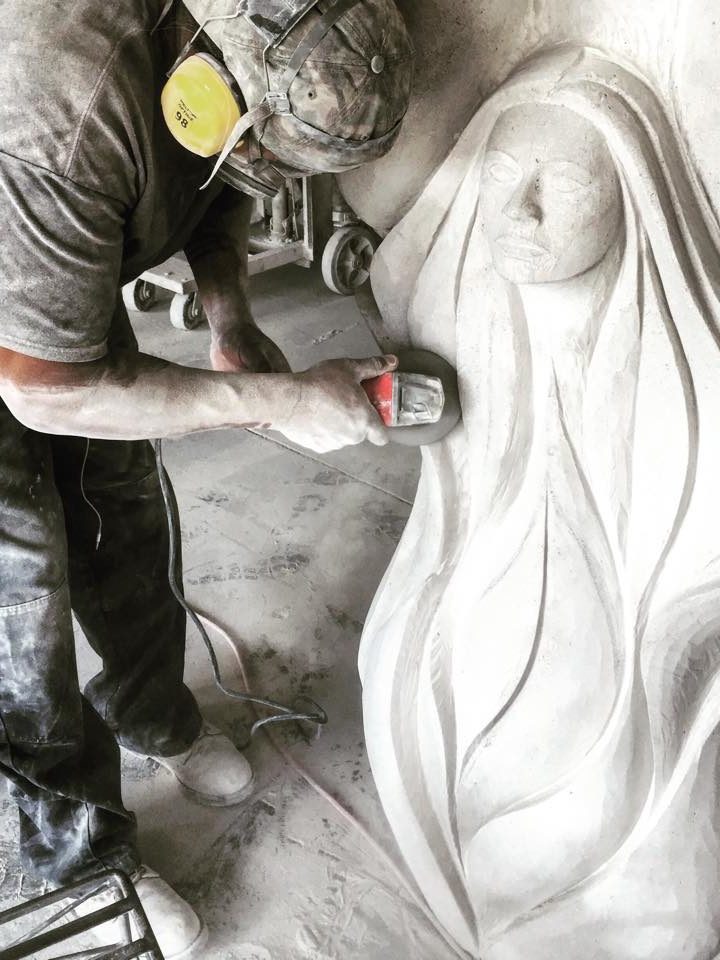
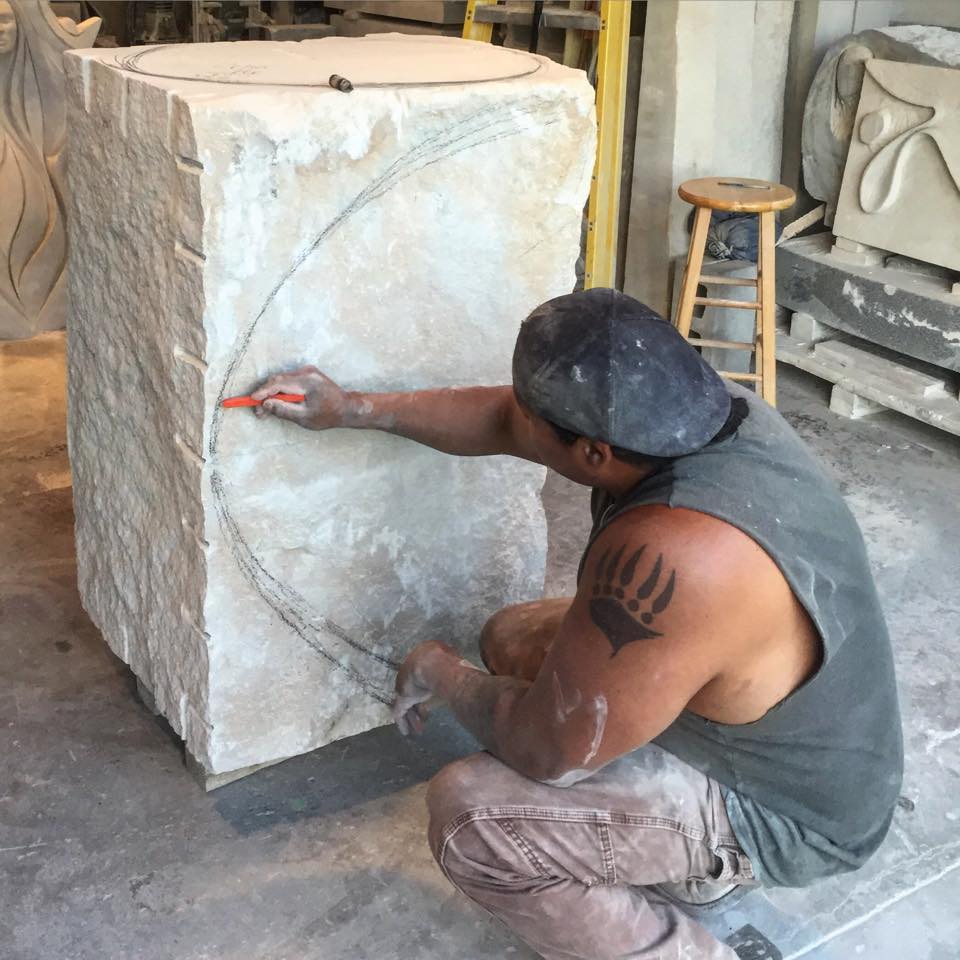
What exciting new things are you currently [2017] working on?
So I got a couple of new stones, a couple of big stones… I don’t know what I’m going to do with them yet, but I’m pretty excited about them. Just the process of creation is exciting.
Thank you, Jason. Where can we find more of your work?
Thank you for visiting Tomorrow’s Stories. You can find me on Facebook; you can message me, and I’ll get back to you. On Instagram, you can also get a hold of me on there. It’s just @jquigno.
For more information on Jason’s work, please visit Jason Quigno’s official website.
Be sure to join our mailing list and follow us on Facebook, Instagram, and Twitter to learn about upcoming events, classes, and exhibitions!

